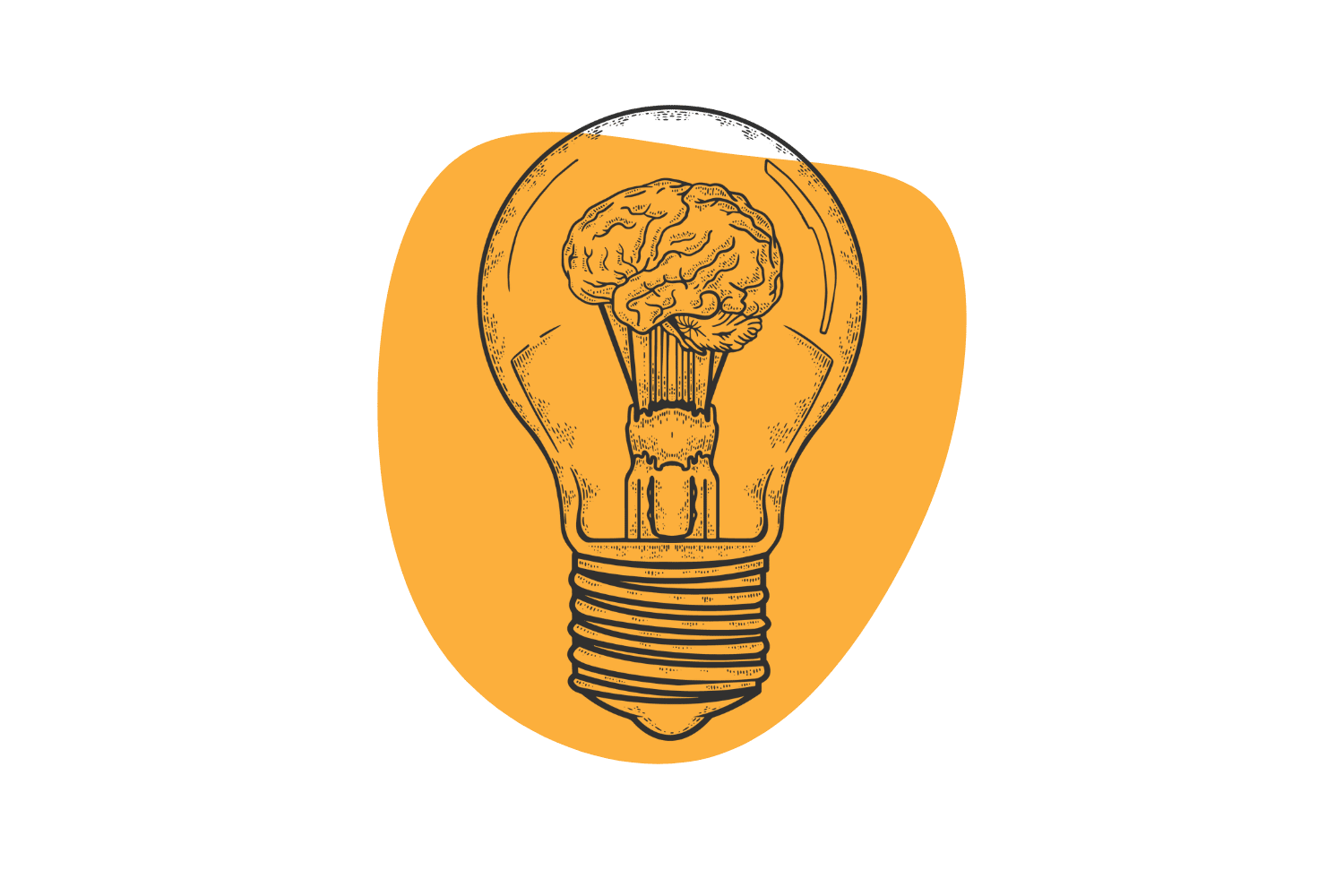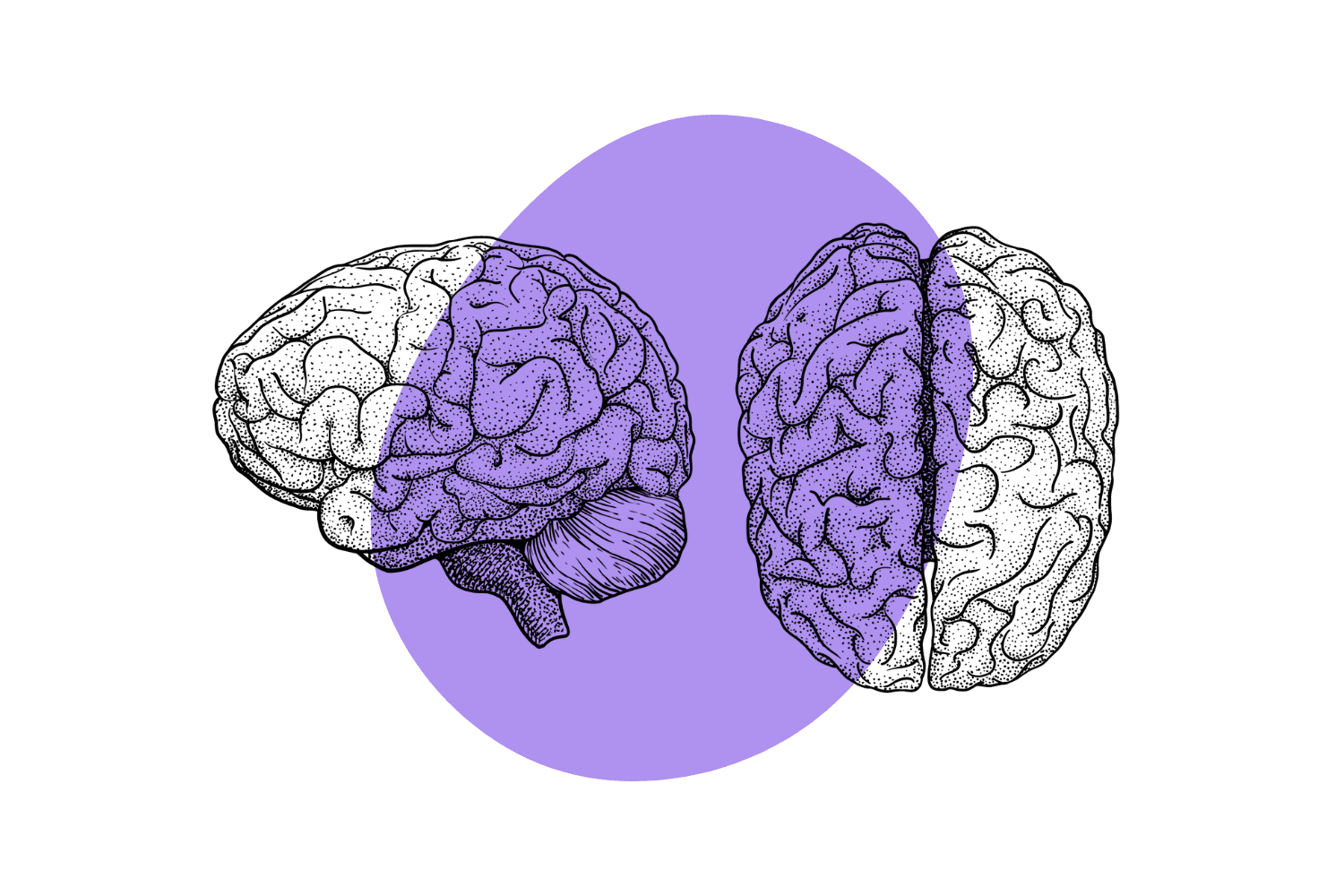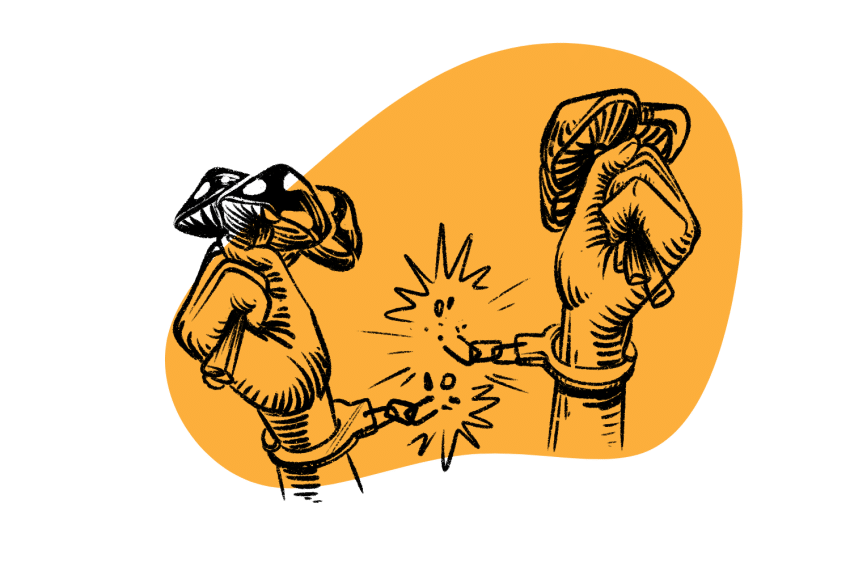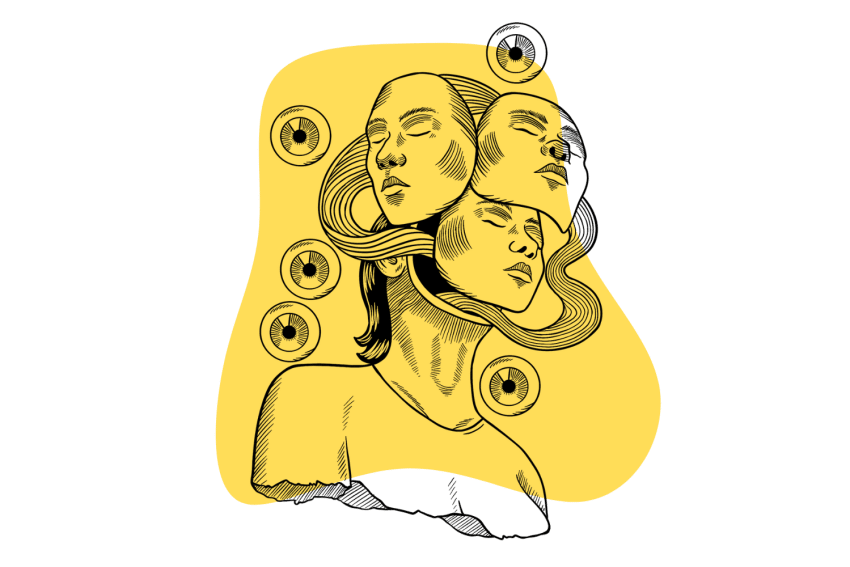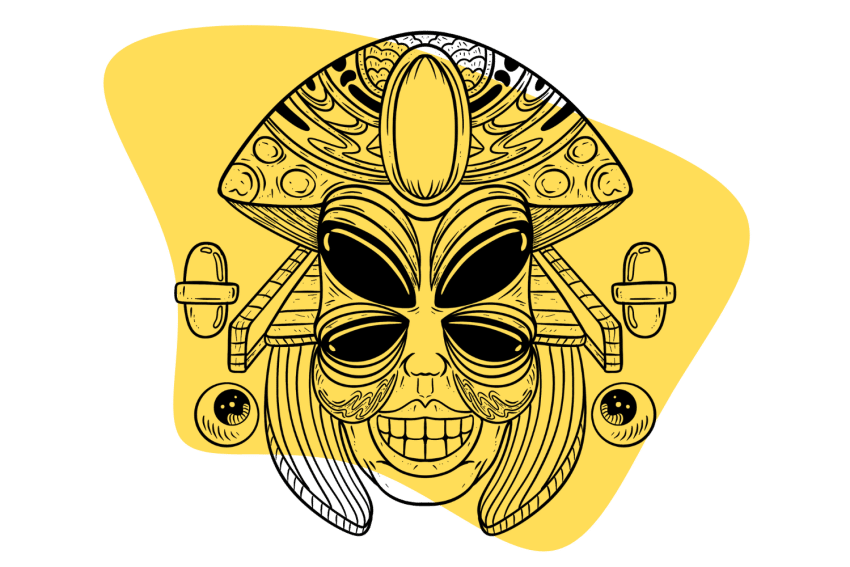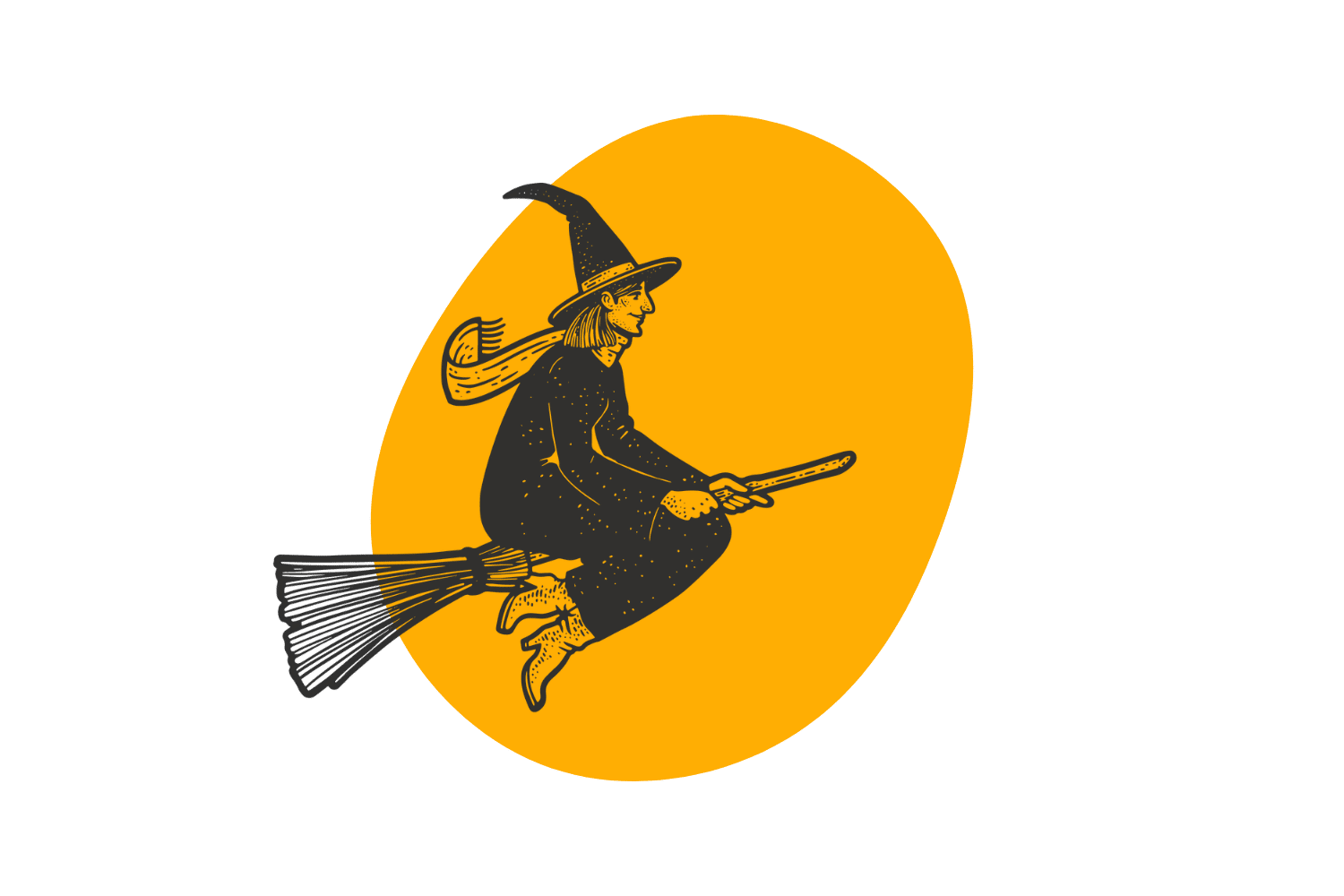What Are Thought Loops (& How to Stop Them)
“Thought loops” are repetitive and intrusive thoughts or actions and are a normal part of using psychoactive drugs. Like the effects of a drug, they are temporary.
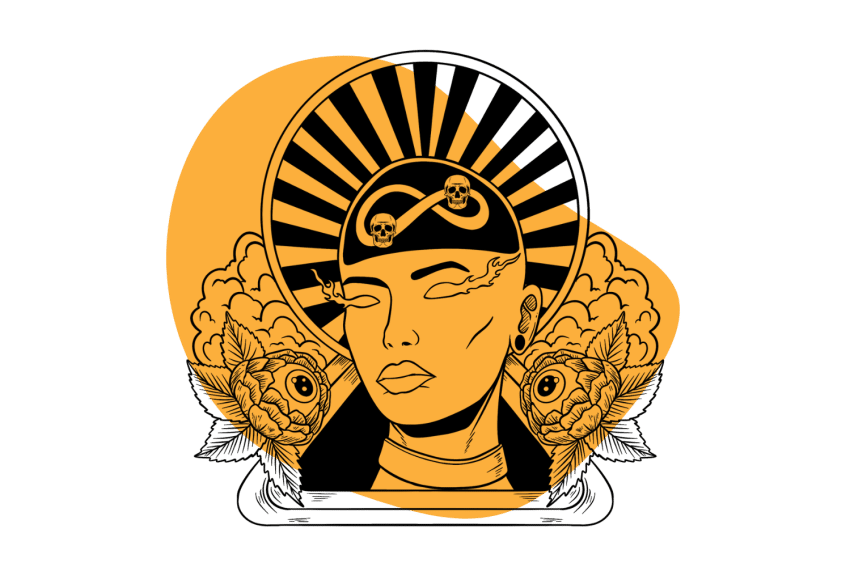
Thought loops are a common phenomenon when using psychedelic drugs.
These “loops” are thoughts or actions that repeat without conscious control.
For example, entering a room, forgetting why you came, leaving and reentering the room, and forgetting why you came again.
They can be funny or frustrating, but with the right mindset need not derail a journey.
“Intrusive thoughts,” which are what psychology calls sudden unwanted thoughts, are a normal part of life [1].
“Rumination” also relates to thought loops. It’s a repetitive focus on our problems or potential problems.
When we take psychoactive substances, the mind can react in ways we are not used to. This might be an “amplification” of feelings and thoughts. Some online theories suggest looping thoughts are lapses in memory. Anyone entering altered states should prepare to navigate big changes to their everyday thoughts.
In this article, we explore thought loops, what they are, where they might come from, and how to stop them.
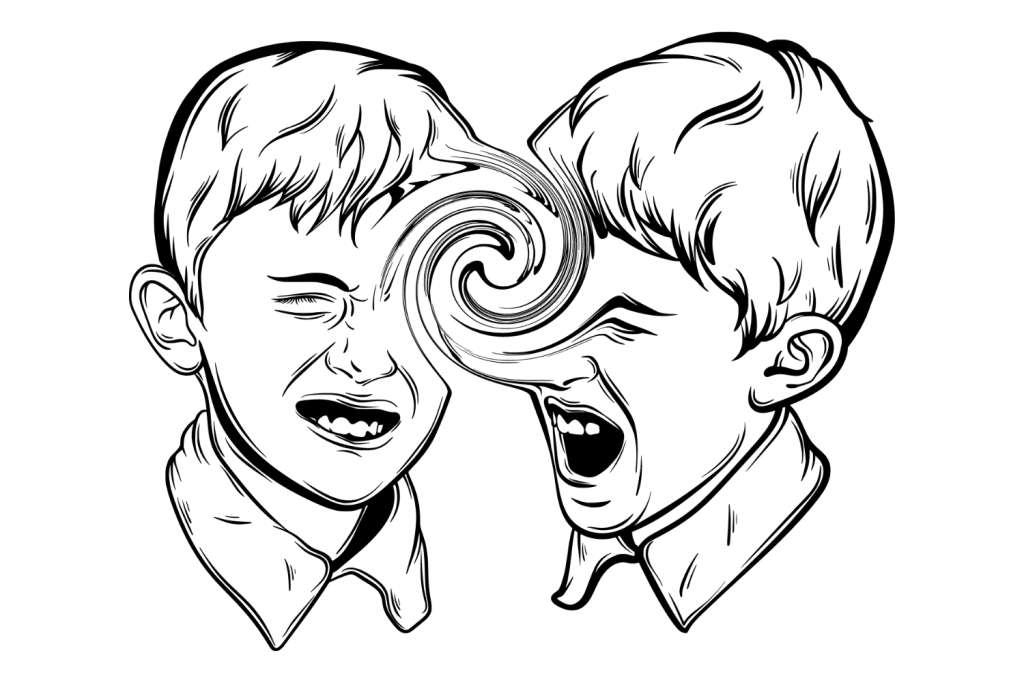
What Do Thought Loops Feel Like?
Most of us have had the experience of getting a song stuck in our heads and repeating it over and over. Known as “earworms,” these happen to 89% of people at least once per week [2]. Just like earworms, thought loops can range from minor background noise to extremely distracting or annoying.
Another way to understand thought loops is by looking at Obsessive Compulsive Disorder.
People with OCD repeat the same actions without ever getting satisfaction from them — think washing your hands, but once they are clean, needing to do it again.
On psychoactive drugs, a similar thing can happen, and unlike an earworm, the loop might be an action.
What Are Thought Loops?
“Thought loops” is a term used in psychedelic circles. In psychology, thought loops could fall into a few categories, although these ideas generally describe things happening in a sober state of mind.
The phenomenon of drug-induced thought loops isn’t well explored, so it’s tough to draw a clear line to the concepts we’ll cover in a moment. These types of thoughts have links to various conditions like depression, anxiety, PTSD, schizophrenia, psychosis, and others.
Psychoactive drugs can make these situations worse, like amphetamine-induced psychosis, or in some cases better — like reports of psychedelics reliving some people of rumination [3].
It’s noteworthy that amphetamines like ADHD medication can help some people focus and overcome difficult thoughts, and psychedelics can also induce psychosis.
Clearly, thought patterns, their causes, and how drugs affect them are complex a topic deserving of study, and it seems there might be several different types of “loops.”
Here are some concepts that may one day shed light on thought loops:
1. Intrusive Thoughts
Everyone encounters strange or unwelcome thoughts. They can be a minor annoyance or a symptom of anxiety or OCD. Delusional intrusive thoughts might signal schizophrenia. Having delusional thoughts while under the influence of substances is fairly common, however.
2. Rumination
Associated with repetitive thoughts focused on causes of our distress or hypothetical unpleasant outcomes. This type of thinking may contribute to depression. Drug-induced thought loops are also repetitive but not necessarily focused on distress.
3. Obsessive Thoughts
Similar to intrusive thoughts, but more persistent and difficult to shake. Thought loops from psychoactive drugs may mimic the compulsive thoughts and actions seeking to soothe the distress of compulsive thoughts. However, these thoughts will fade along with the effects of a drug.
4. Short-Term Memory
Psychonaught Wiki has suggested thought loops are lapses in short-term memory, but this isn’t confirmed by any data. However, considering the common loop of checking your phone, forgetting why you checked, and repeating, the role of memory is something to consider.
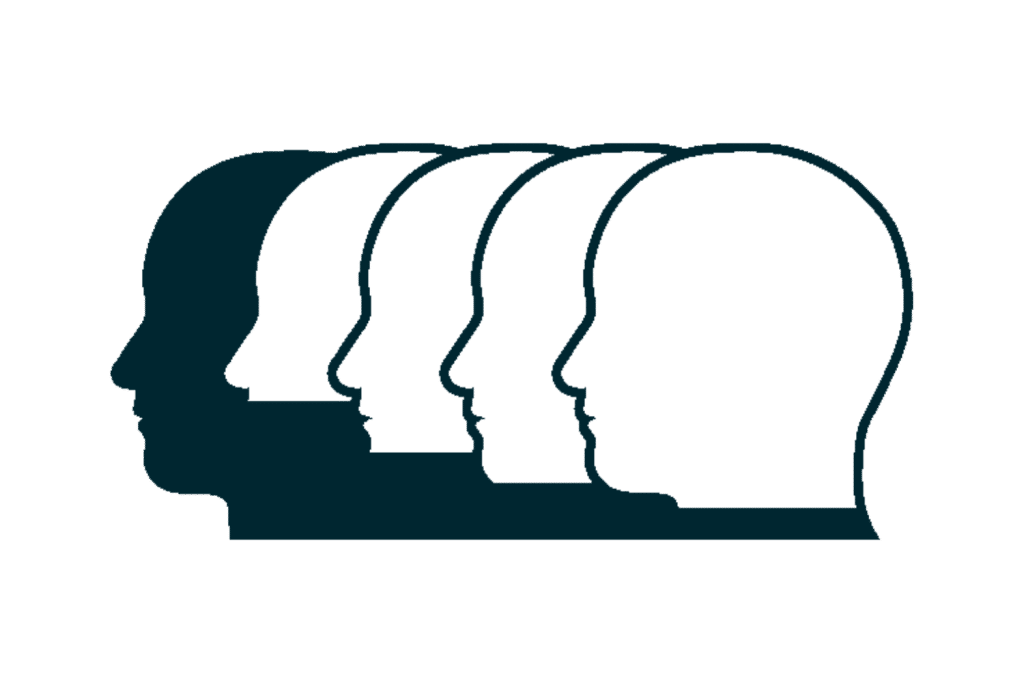
What Causes Thought Loops?
What causes many of the above conditions and drug-induced thought loops isn’t well understood.
In fact, we don’t know what causes OCD, although some theories exist, with experts pointing to genetic and environmental factors. Research involving substances mostly revolves around the serotonin system, as treatment of OCD with SSRIs is sometimes effective.
There is also a link between intrusive thoughts, rumination, obsessive thinking, and PTSD. These thoughts can further activate someone and make life difficult. Sometimes the thoughts are about a traumatic event, other times; it is less clear.
A neat explanation of mechanisms isn’t clear, but there are some clues. For example, many psychoactive drugs interact with the serotonin system [4] and connections between OCD, dopamine [5], and glutamate [6].
However, until someone researches this topic deeper, these are simply rough directions to look into.
What Drugs Cause Thought Loops?
Most of us have experienced something similar to thought loops. In fact, before assuming you are developing schizophrenia or OCD, consider thoughts that exist on a spectrum that fluctuates. For example, most of us will fall in love, have a disagreement, or drive towards a goal. These moments of focusing intensely on a single thing are a normal part of life.
When we involve substances, the intensity can get turned up. Drinking too much coffee can give people panic attacks, and heavy alcohol intoxication can fixate people on unprocessed emotions or issues in their life. As one might expect, there are reports across many classes of drugs, both recreational and pharmaceutical, causing thought loops.
1. Psychedelics
Substances like LSD (lysergic acid diethylamide), psilocybin (magic mushrooms), MDMA, mescaline, DMT, and many others are also famous for their ability to create thought loops.
Psychedelic chain-thinking usually doesn’t last a whole trip — rather, it tends to come in bursts (although, with time dilation, it can seem like a big deal).
Remember, it’s extremely common, so stay calm, find a safe space, and know it will pass.
2. Stimulants
Cocaine, methamphetamine, Ritalin, and related stimulant analogs are notorious for looping, obsessive thoughts, particularly with chronic use. When going through withdrawal, intrusive and looping thoughts are normal side effects, although in rare cases require treatment.
3. Cannabis
Marijuana, particularly high doses of edibles, can create looping thoughts. Think “greening out” or panic attacks (racing heartbeat, sweating, dizziness, nausea, sense of doom.)
Like a psychedelic experience, finding a calm space and understanding it will pass is key.
4. Prescription Medications
Drugs for epilepsy, anti-psychotics, hypnotics, lithium, and others can also create “OCD-like symptoms,” which include thought loops.
Sometimes, these symptoms can take up to a month to emerge and will usually subside by discontinuing the drug.
In rare cases, OCD-type symptoms develop after discontinuing prescription drug use.
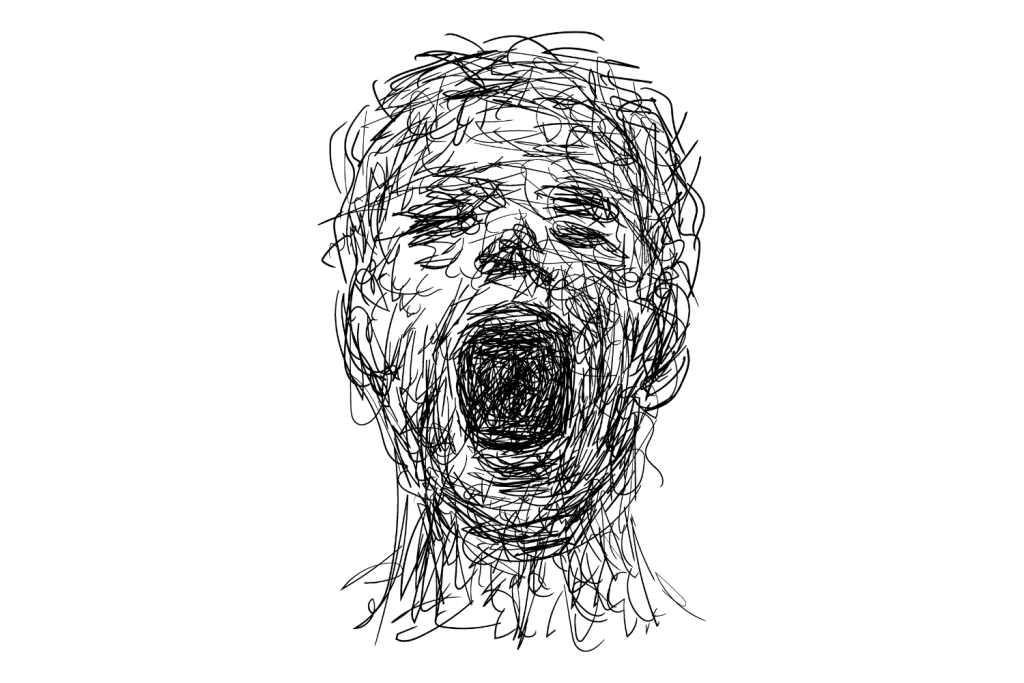
How to Stop Thought Loops
Interrupting a loop is possible. The most important step is to stay calm and be patient. Becoming frustrated or angry might increase anxiety and feed the loop.
Taking substances to try and alleviate thought loops isn’t recommended. Some people may smoke cannabis or tobacco and have a drink to relax, but adding more substances to the mix risks further spiraling.
Here are some methods to interrupt thought loops:
1. Take Deep Breaths
The go-to navigation tool for when things get weird. Deep breaths into the belly calm the nervous system and redirect attention to the present moment.
2. Reassure Yourself
Simply remind yourself you took a drug, and these are normal, temporary effects. Don’t underestimate the calming power of simply acknowledging what is happening is normal.
3. Redirect Your Attention
Place your attention on something outside of yourself. External stimuli can both trigger and distract from intrusive thoughts. If it feels right, physical touch with another person can be comforting.
4. Try a New Activity
Put on a movie to occupy yourself, create art, play music, go for a walk, or stretch. Shifting your internal state and external situation gives your mind new material to work with.
5. Change up the Environment
Try moving into a new space or changing up the music. We are extremely sensitive to psychoactive compounds, and something as simple as changing a song or going outside can have a big impact.
6. Talk to Someone
If you have a tripsitter or friend with you, tell them what is happening. They can ask you questions or reassure you that what is happening is normal. If you are tripping alone, call Fireside to talk to someone.
7. Surrender
We get it; easier said than done, but letting go of needing the experience to go a certain way can release stress and make space for the unexpected.
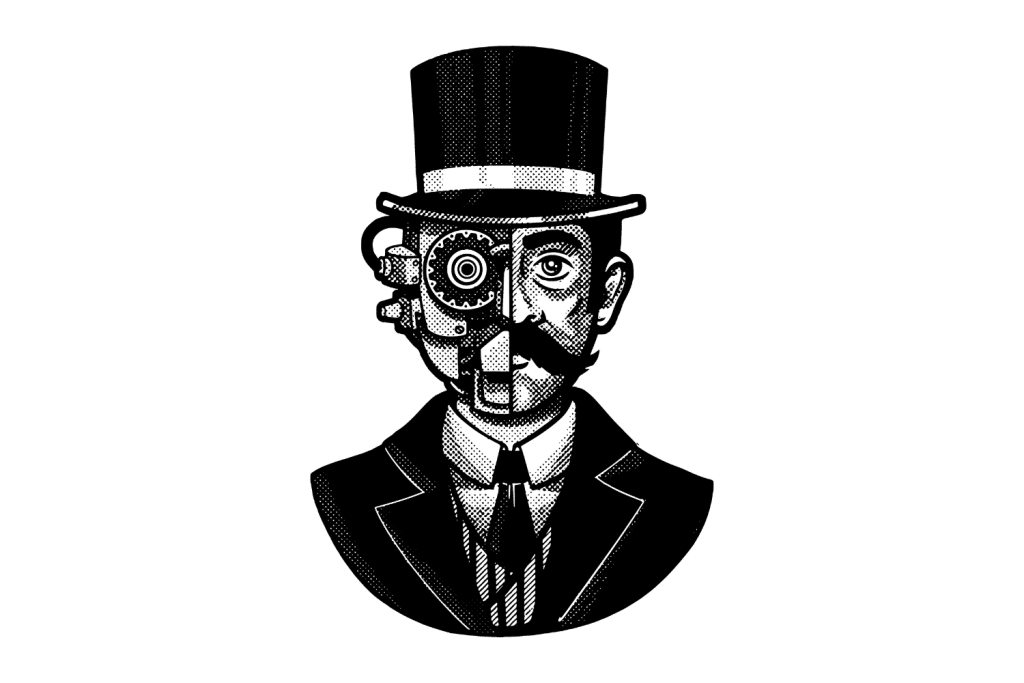
FAQ Thought Loops
Answering common questions about thought loops…
1. How Long Do Thought Loops Last?
Thought loops can last for a few minutes to several hours. They will stop once a substance wears off. People feel many difficult thought patterns throughout life, and taking drugs is no exception. Thoughts and feelings might feel more impactful in altered states, but they aren’t something to “figure out.” Just stay calm and either distract yourself or simply observe what is happening.
2. How to Interrupt Looping Thoughts
Focus on external stimuli and remain calm by taking deep breaths. Don’t take other substances, and if you need support, contact someone you trust. Thought loops are a normal and common experience.
3. Can Psychedelics Cure OCD?
There are some protocols using psilocybin for treating OCD with good results. Because psychedelics are in the early stages of research, it is difficult to say they are a cure, but they show promise alongside therapy to improve symptoms of OCD.
References
- Clark, D. A., & Radomsky, A. S. (2014). Introduction: A global perspective on unwanted intrusive thoughts. Journal of Obsessive-Compulsive and Related Disorders, 3(3), 265-268.
- Liikkanen, L. A. (2012). Musical activities predispose to involuntary musical imagery. Psychology of Music, 40(2), 236-256.
- Fauvel, B., Strika-Bruneau, L., & Piolino, P. (2021). Changes in self-rumination and self-compassion mediate the effect of psychedelic experiences on decreases in depression, anxiety, and stress. Psychology of Consciousness: Theory, Research, and Practice.
- Aouizerate, B., Guehl, D., Cuny, E., Rougier, A., Burbaud, P., Tignol, J., & Bioulac, B. (2005). An updated overview of the putative role of the serotoninergic system in obsessive-compulsive disorder. Neuropsychiatric disease and treatment, 1(3), 231-243.
- Koo, M. S., Kim, E. J., Roh, D., & Kim, C. H. (2010). Role of dopamine in the pathophysiology and treatment of obsessive–compulsive disorder. Expert review of neurotherapeutics, 10(2), 275-290.
- Pittenger, C., Bloch, M. H., & Williams, K. (2011). Glutamate abnormalities in obsessive-compulsive disorder: neurobiology, pathophysiology, and treatment. Pharmacology & therapeutics, 132(3), 314-332.


